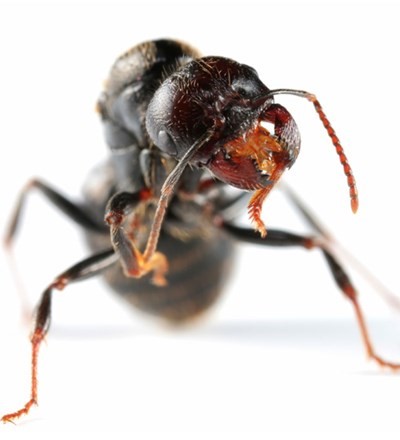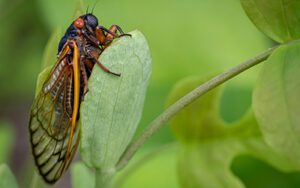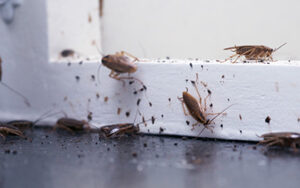
By this time in the summer, most homeowners have probably spotted at least a few ants indoors. It is important to note that not all ants are created equally; some species of ants are just a nuisance, whereas others can cause serious problems. Early identification of one species in particular can prevent structural damage to your home, and you should keep an eye out for it this summer – the carpenter ant.
Distinguishing Carpenter Ants
Carpenter ants have a few distinctive features to help identify them. The middle section of their bodies (the thorax) is rounded and they have a single node connecting their thorax and abdomen. Other common ants will have either an uneven thorax, two nodes between the thorax and abdomen, or both. Carpenter ants also tend to be larger than other species. Unfortunately, they are still so small that is very difficult for the untrained eye to distinguish between carpenter ants and other less harmful species. For this reason, it is best to contact a pest control professional if there are any signs of a potential carpenter ant infestation.

Identifying Infestations
Once carpenter ants have been correctly identified, the next step is to determine if there is a nest inside your house. Seeing a few carpenter ants inside your home in late spring and early summer is not definitive proof of an indoor nest, as they are most likely just looking for food or water for their outdoor colony. However, if any of the following are seen, it is likely that some carpenter ants have made their home inside of yours:
- Frass (fine, powdery wood particles and insect parts, like sawdust) falling from interior wood. As you may know, carpenter ants do their damage by excavating tunnels in wood for their colony to live in. Unlike mosquitoes, however, they don’t eat the wood. Instead, they deposit it as frass.
- Many winged ants flying inside your house (the winged carpenter ants are capable of reproducing, and they may be looking to set up additional colonies inside your home).
- Consistent presence or sightings of many wingless worker ants in rooms other than the kitchen.
- Carpenter ants inside the house between fall and early spring.
Because these indicators are small and require attention to detail and consistent record keeping, they can easily be missed. Carpenter ants’ peak activity also occurs during the night, so they often go undetected by homeowners. A trained Service Specialist who inspects your home and installs monitoring traps is a much more reliable source for identifying infestations inside of your home.
Treating an Infestation
If there are signs that a carpenter ant colony is inside your home, the nest needs to be destroyed and the queen killed for any chance of long-term success. This can be very difficult as the entry point is often very far from the actual nest location, and satellite colonies could exist at other places in your home. Contact an extermination company to get the best results.
Need a pest control estimate?
We'll call you! Our representatives are fast and friendly.
Carpenter Ant Identification in Wisconsin
Serving Wisconsin





